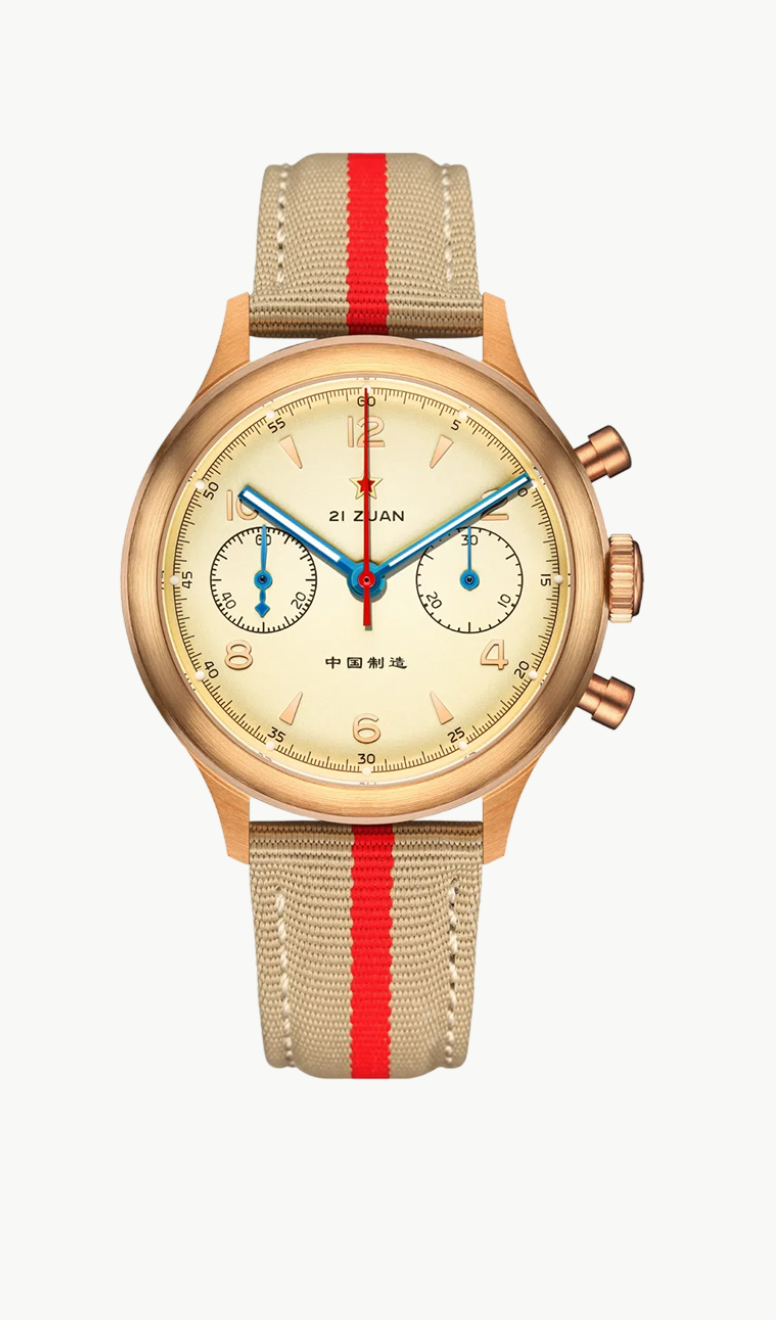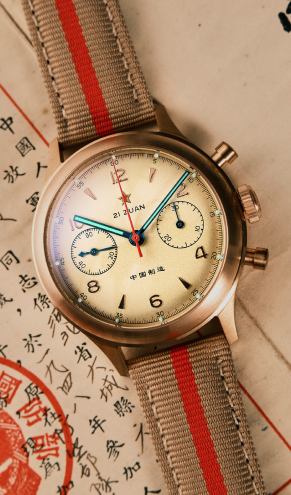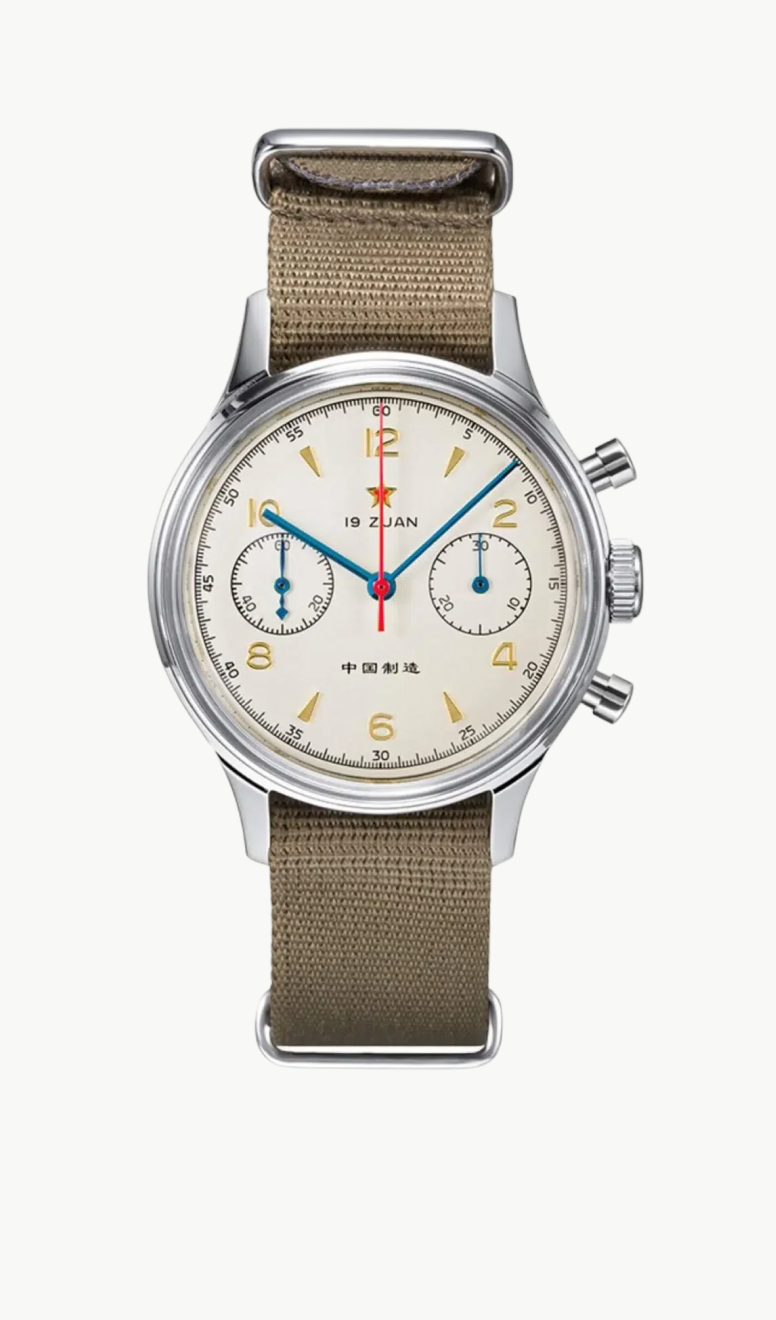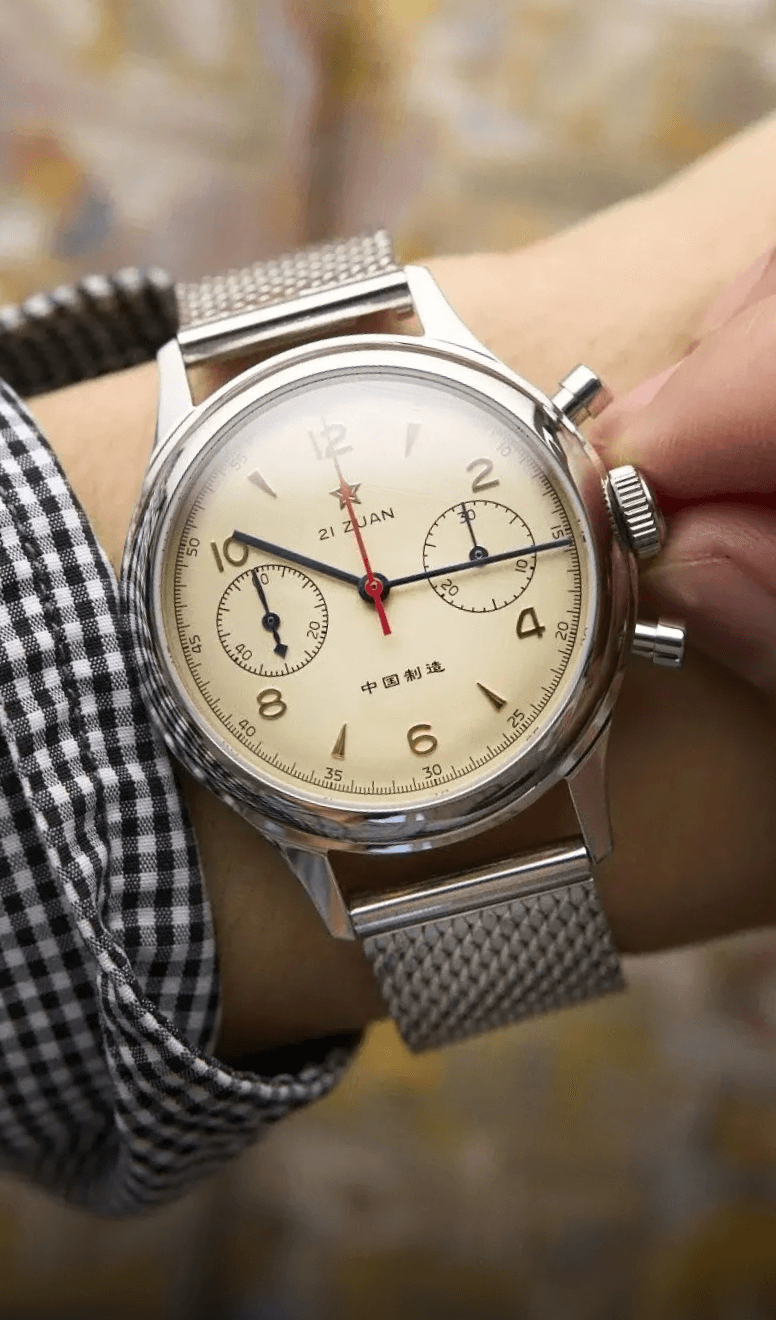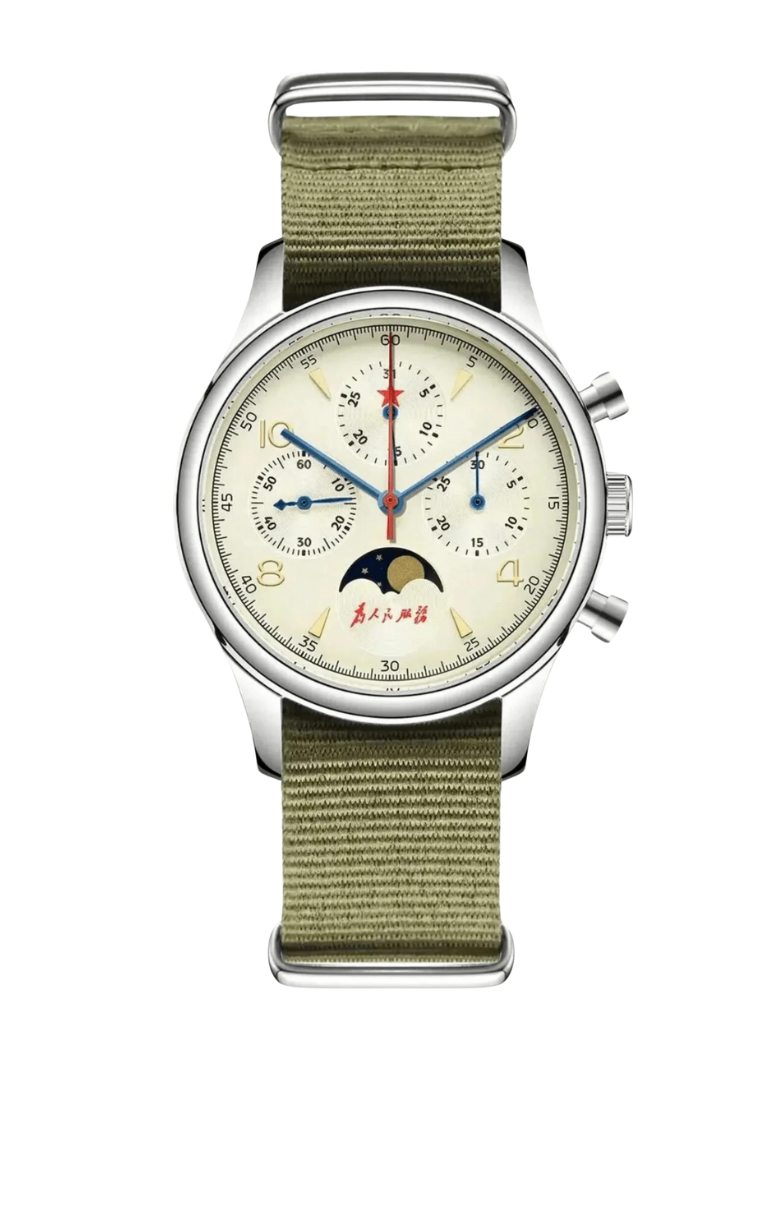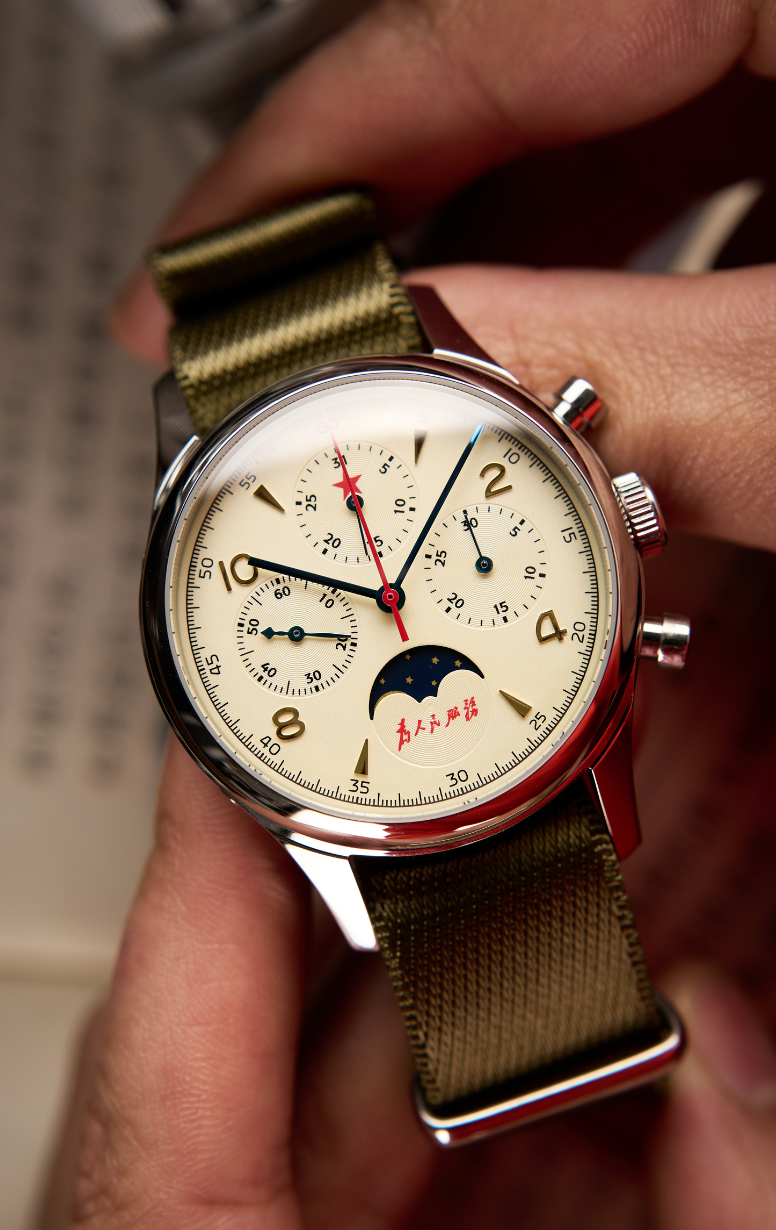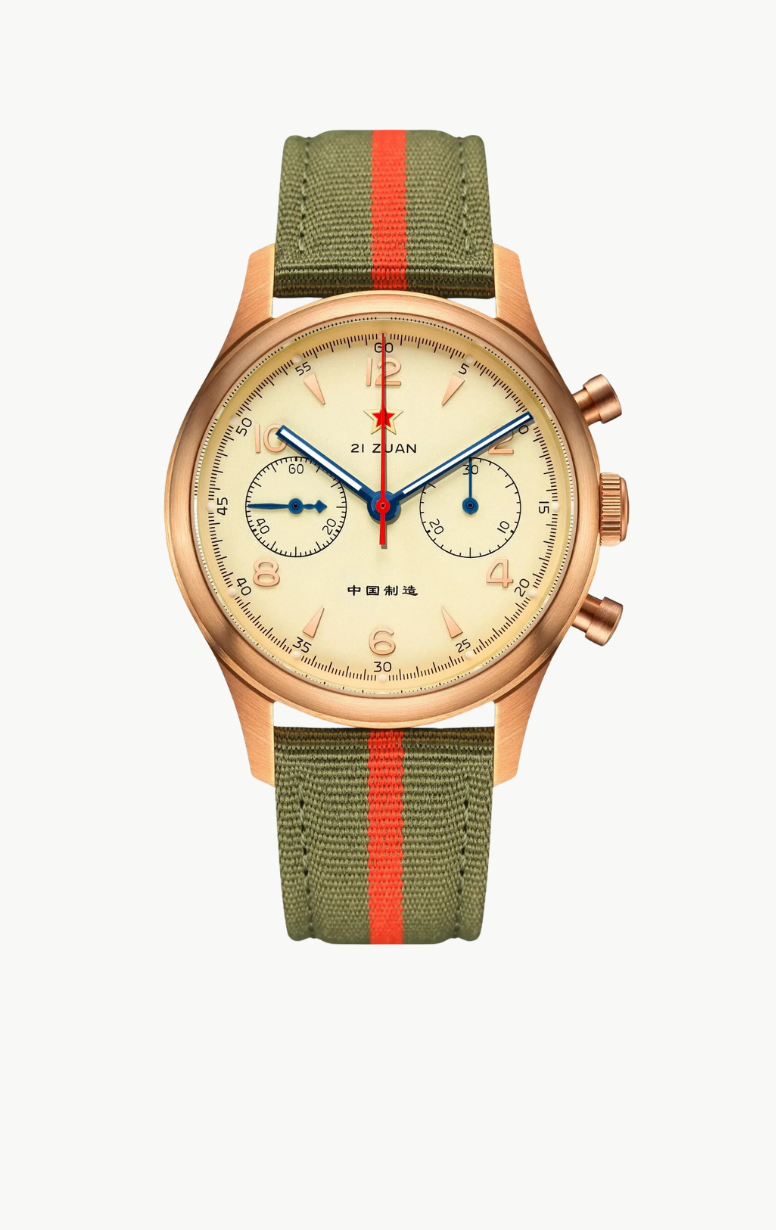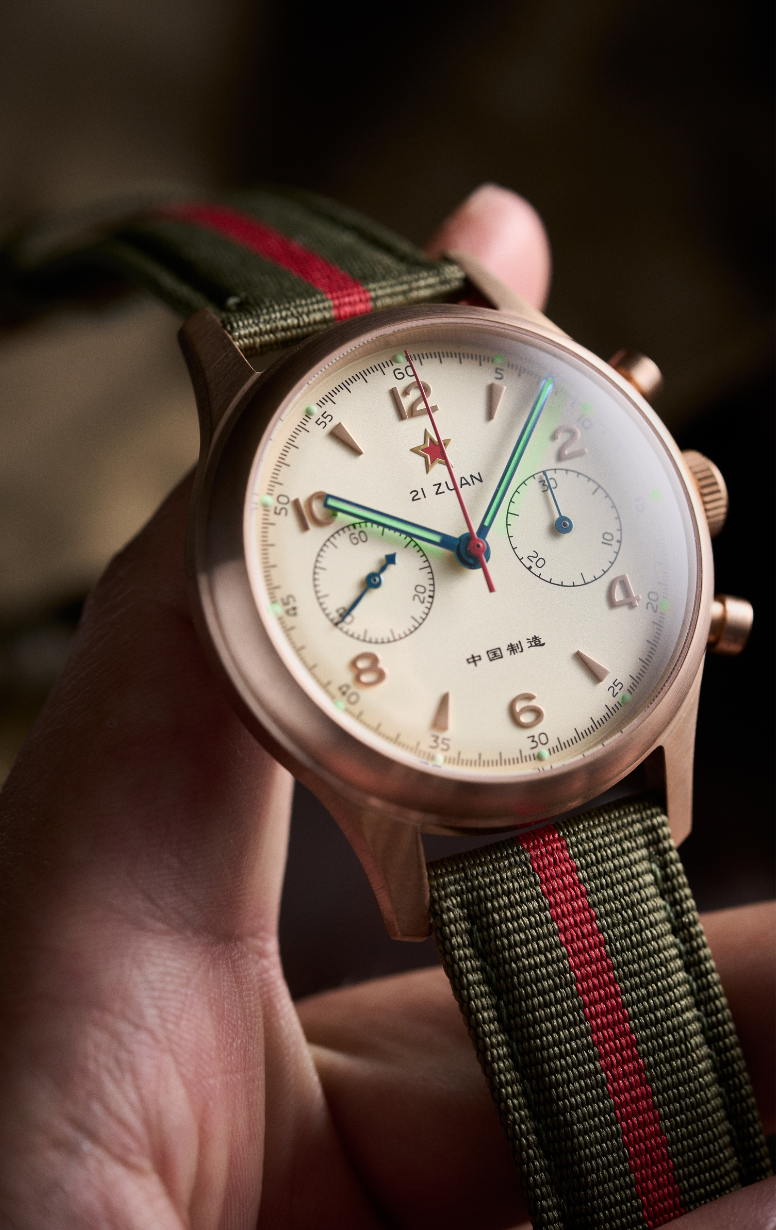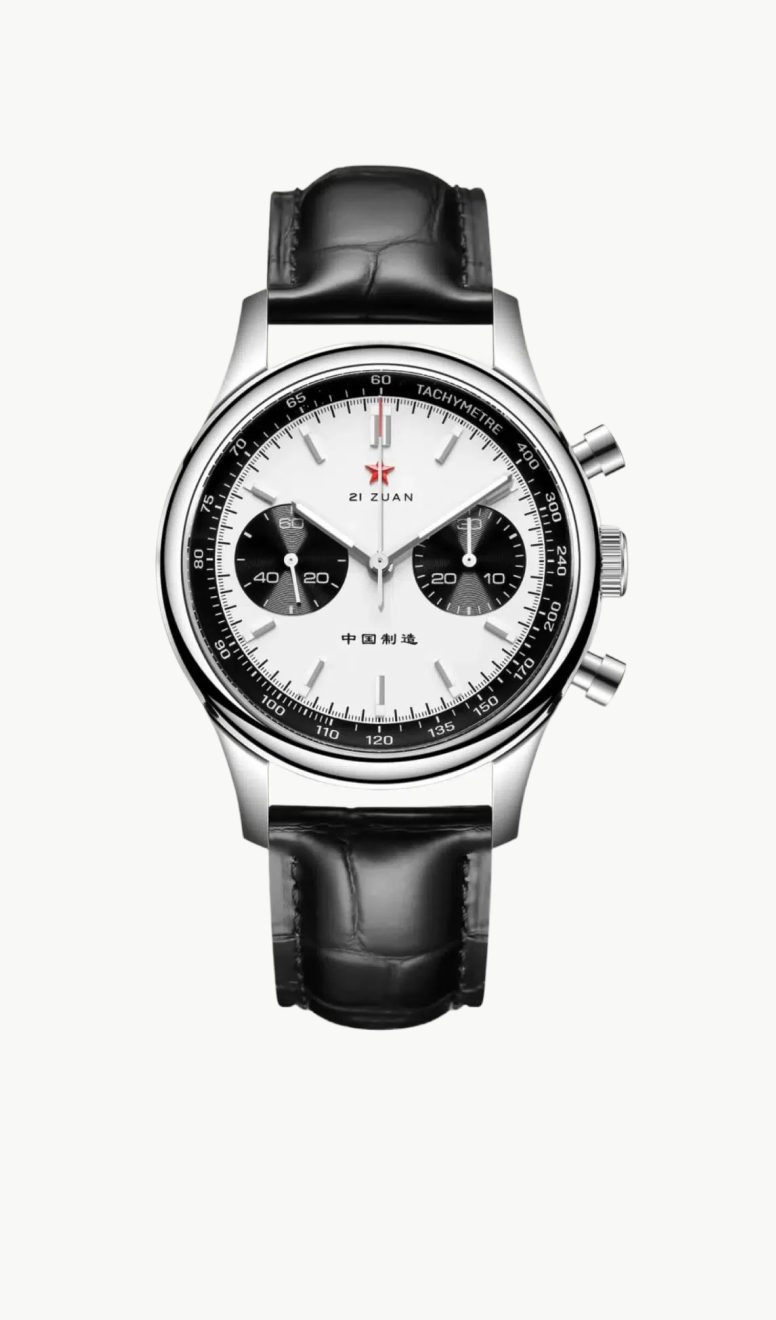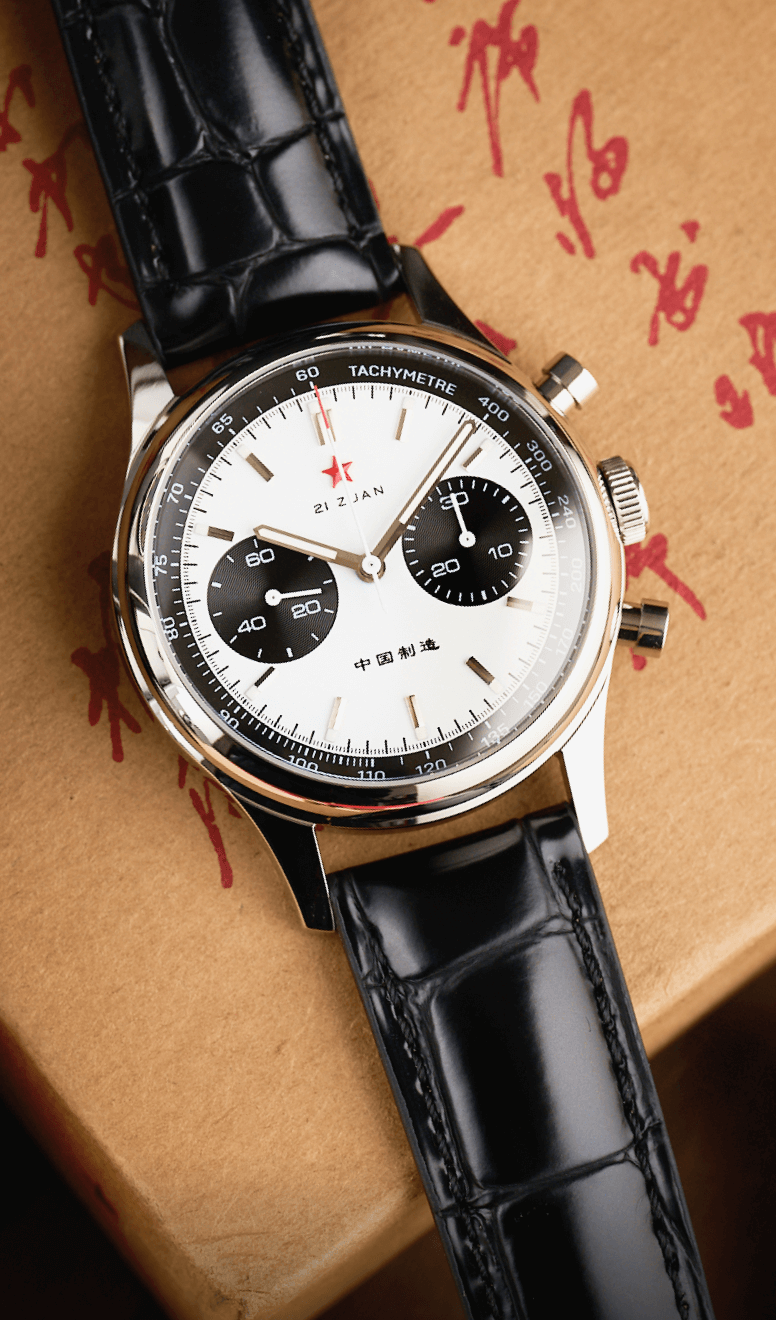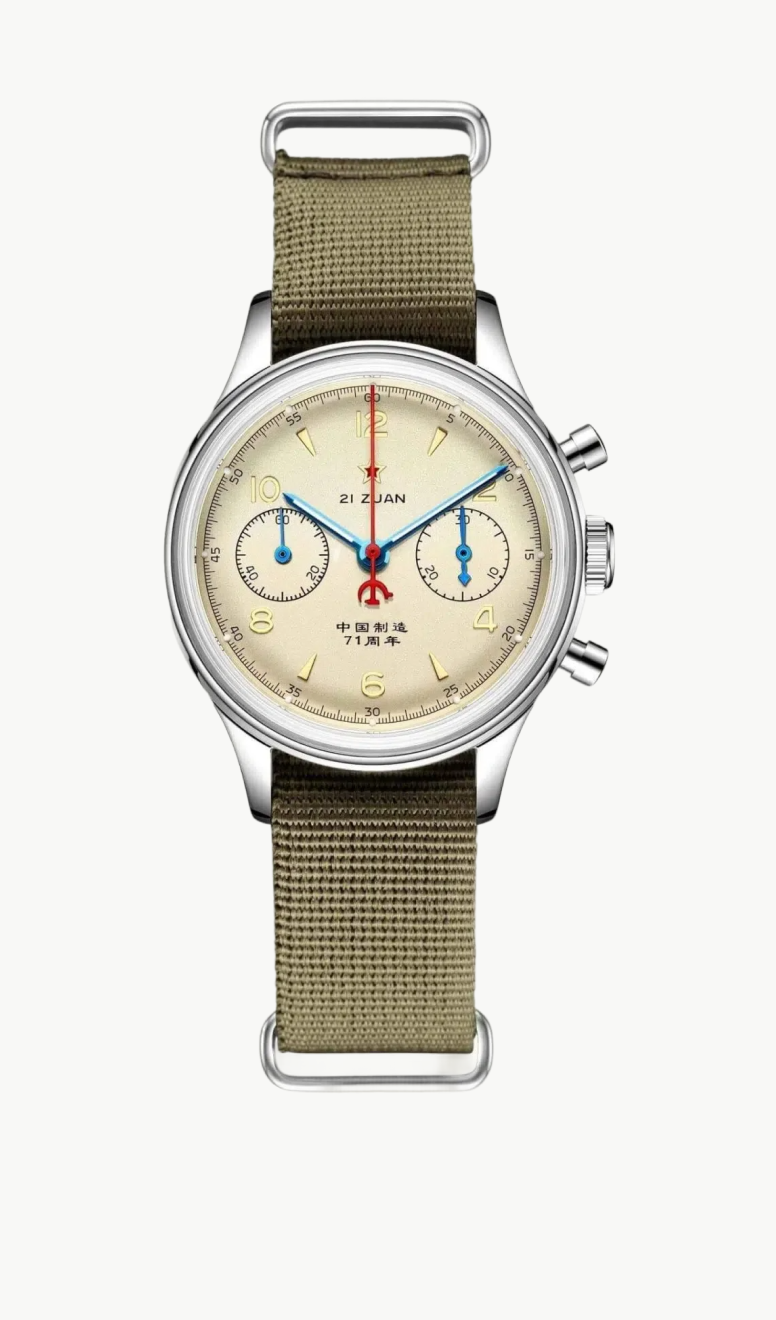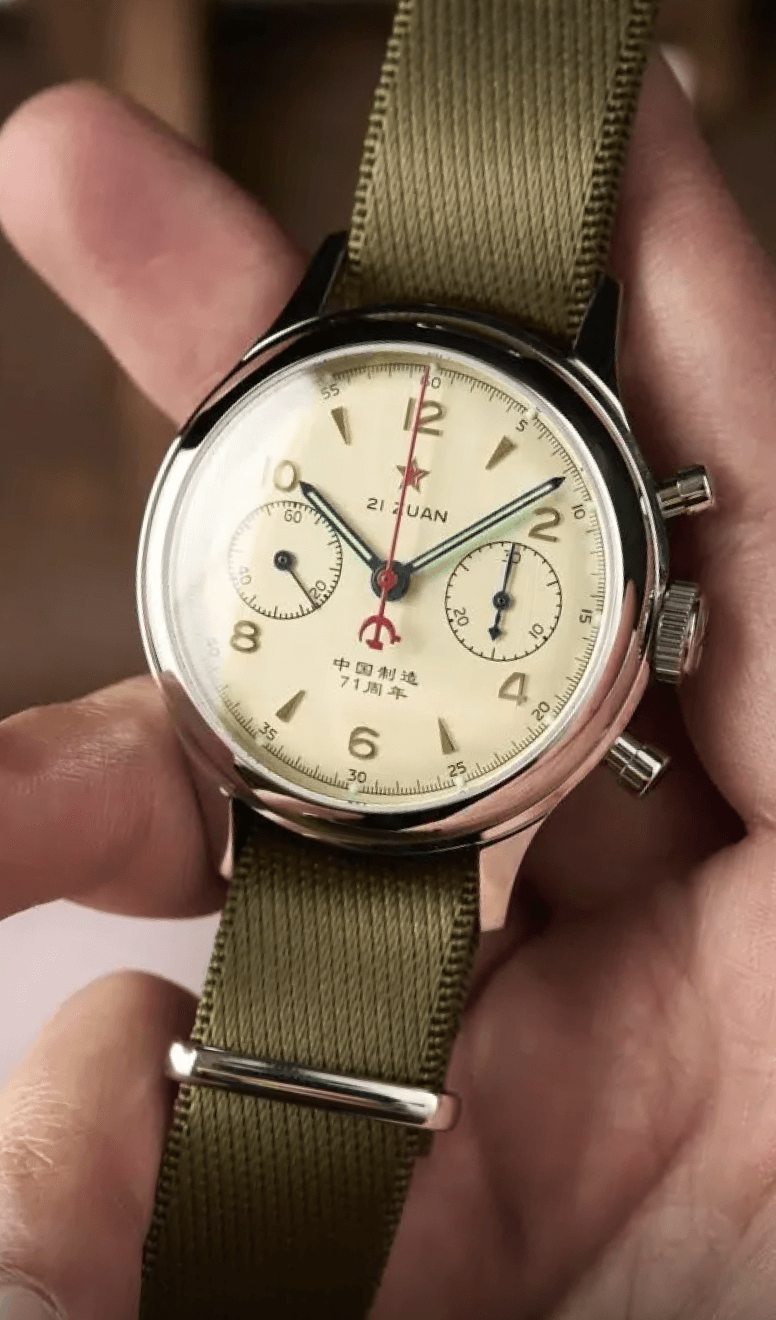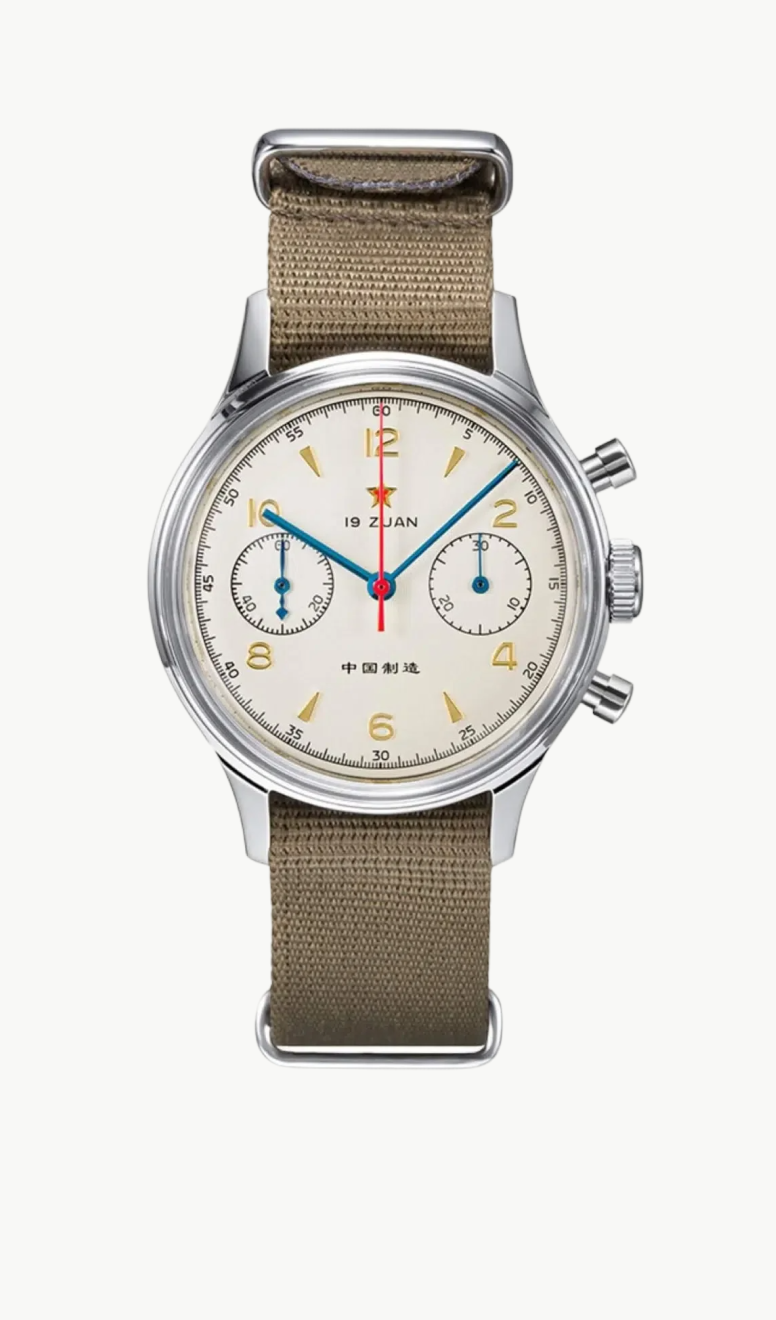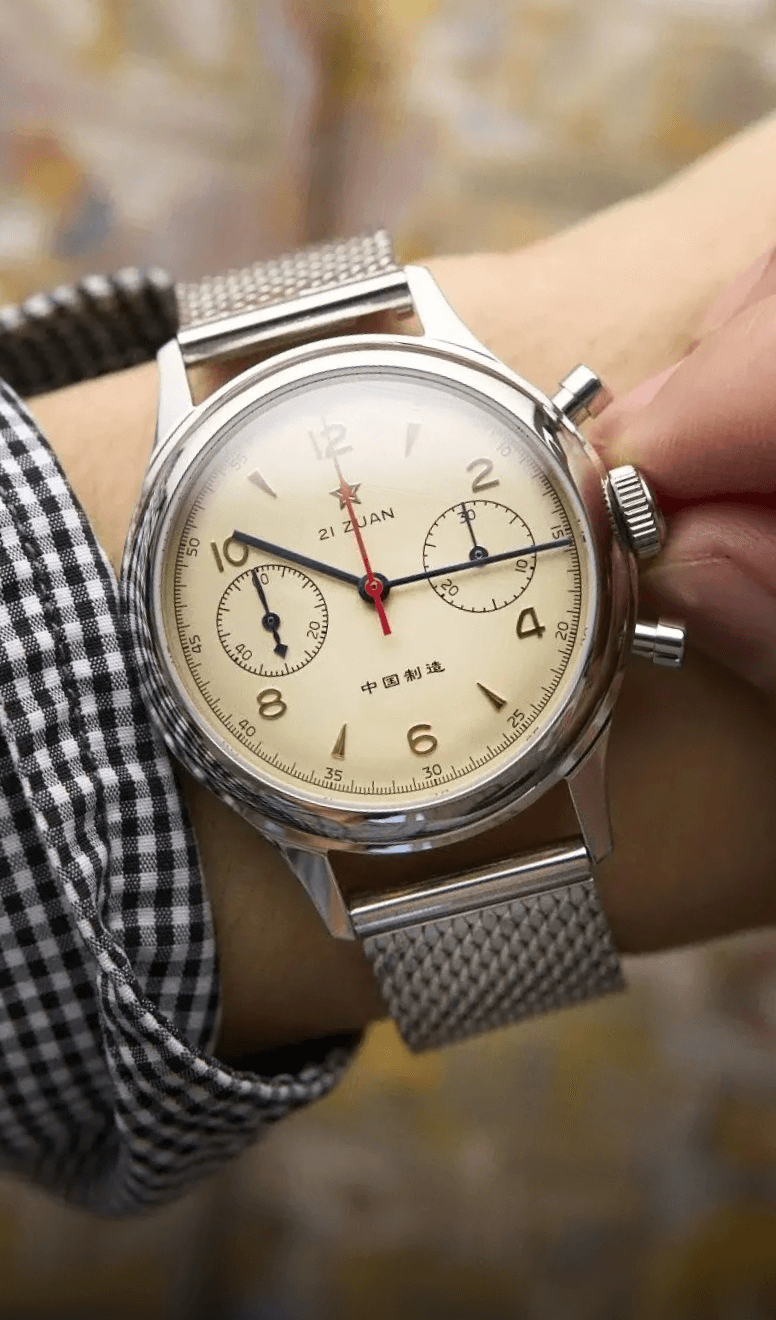The original 1963 Seagull came in a domed acrylic glass. However, many people wear their Seagull 1963 watches on a daily basis, leading to a re-examination of dial-covering glass options.
The question then rose: should you opt for the original acrylic glass, or should you choose the precious sapphire crystal for your Seagull 1963 watch?
This can be an overwhelming question, even in the mind of a watch lover and/or collector. To try and make your choice easier, we’ll explain both options below, each having their own advantages and disadvantages. So, let’s get started!
Strength of Acrylic glass
Acrylic is similar to plastic as you know it. It’s lightweight, durable and affordable. It resembels a type of glass and is the glass used in the original 1963 Seagull. The domed shape gives it a unique look, something that can only be done with acrylic glass.
However, there is a downside: it is prone to scratches from all sorts of material. This should however not be a big deal, because soap and water removes all scratches from acryllic. How soap and water removes certain undeep scratches from car paint.
All you have to do is polish it with a product like poly watch (polishing compound) to make it scratch and smudge free.
Strength of Sapphire glass
The next option for your Seagull 1963 watch is a model with sapphire. This crystal choice for your 1963 Seagull watch will ensure it looks like new, even after months of extensive usage. In the case of hard sapphire, on Mohs scale sapphire is just below diamond in terms of hardness.
It is possible to mount both sides of the glass with an anti- reflective coating without causing any deformation. Although called sapphire, this glass is not mined from sapphire. It’s actually produced synthetically inside a factory. This way the glass can be made exceptionaly clear with a degree of clarity that is hardly matched in nature.
The disadvantage of sapphire crystal is the fact that it is relatively expensive to produce. Since it is hard, every time the glass needs to be cut, this will need large amounts of energy and force. This means that once scratches appear on sapphire glass, they’re hard to remove and polish away. This however should be unlikely since it’s not scratched easily.
How do you tell the difference between Acrylic and Sapphire watch glass?
Now that you are familiar with the ups and downs of acrylic glass and sapphire glass, it’s important to identify them correctly. This is a necessary skill for any watch enthusiast to ensure you buy the right item and can keep it in pristine condition. You can check the type of watch crystal you have in your watch in several ways, and it’s easy to see if you know what to look for.
What helps you distinguish between sapphire and acrylic glass is the texture of the glass. For sapphire crystal, the glass will have a pinkish white color of clear size.
Another way to tell if it is a sapphire crystal or not is to pour some water droplets on the glass. If the precipitation starts to come together, this indicates that the glass is sapphire. For acrylic glass, however, the texture is a little cloudy. You can try acrylic glass by simply tapping on the glass.
Whenever you hear a sound like plastic, that means the glass is acrylic. Another way to see it, without trying, is to look at the main beauty of acrylic glass: its a clear dome-shaped glass structure.
This can be difficult to see in a photo if it is not a clear side view photo.
What type of glass should I get?
We listed the advantages and disadvantages of both options and of course there is no “right or wrong option”.
Every watch has different preferences. For those on the go, the Saphire design is the best as it helps protect the glass against damage from knocks and/or wear and tear. For those who like to make something attractive or find it important to have the most faithful version of the original version of the Seagull 1963. The acrylic dome design is chosen as it stands for a higher authenticity and clarity.
So, to put it simply: sapphire crystal will continue to be the top choice for value users when choosing a watch glass due to its brightness, strength and durability, which will keep your watch looking good for a long time. Other collectors see the antiques of acrylic glass given a look at historical accuracy. They’d like to match the original design of the 1963 D304 Seagull. Additionally, acrylic glass is cheaper to replace than a sapphire counterparts whenever replacement is needed.
We hope you found this article useful! If you have any questions, feel free to contact us!
